|
   |
|
Page 5 |
Newsletter 130 Autumn 2020 © Hampshire Mills Group |
|
Memories
Ruth Andrews |
|
I have been thinking about how I can fill a
newsletter with no access to news of Hampshire mills
and I have decided to delve into my past and explain
why I got interested in the subject in the first
place. It was not flour milling at all – it was
textile manufacture and its associated architecture
and technology.
I grew up in Middleton, in what is now Greater
Manchester. As a child, I remember smoking chimneys
on looming black buildings, and mill girls in
scarves and curlers with white fluff stuck all over
their clothes. I always wanted to see what went on
inside the mills.
|
|
I was unsuccessful until I went on an early IA trip
in August 1984 with SUIAG (see
Keith’s article here)
organised by Dr Edwin Course. Manningham Mills in
Bradford was my first experience of a working
textile mill. Manningham Mills were established in
1838 by Samuel Lister as a steam-powered worsted
combing and spinning mill. It was converted to silk
manufacture in the 1850s but suffered a major fire
in 1871. It was immediately rebuilt in the
Italianate style of Victorian architecture; the
ornate chimney is a famous landmark. It grew to
become the largest silk spinning and weaving mill in
Great Britain. |
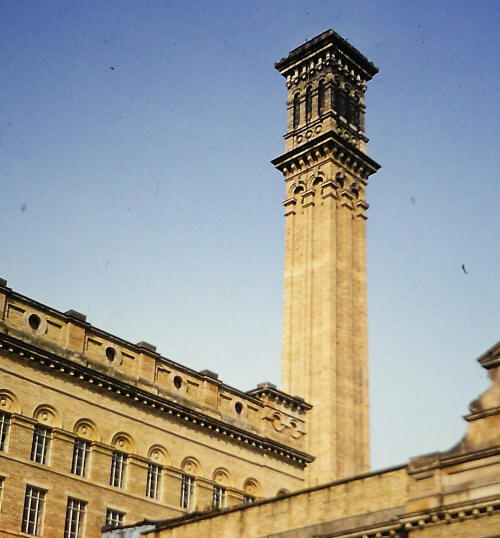 |
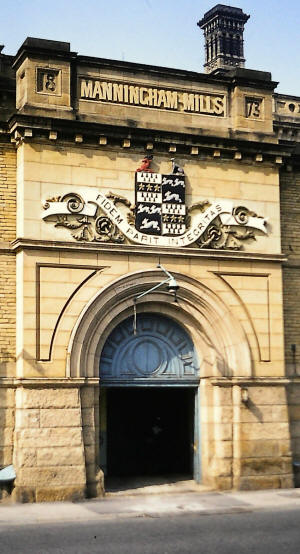 |
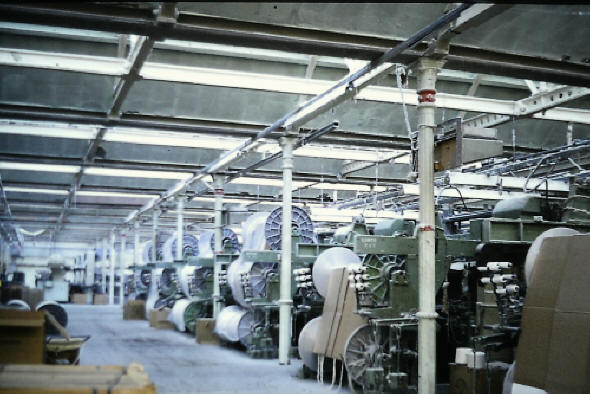
The machines are now all electrically powered so
there is no longer any line shafting or belts in
position, but the need for good light provided by
the large strip lights and the northern light roof
is very evident. This was a specially arranged
visit to a fully working mill, definitely not a
museum, and I have not been able to get inside any
large working mills since.
|
|
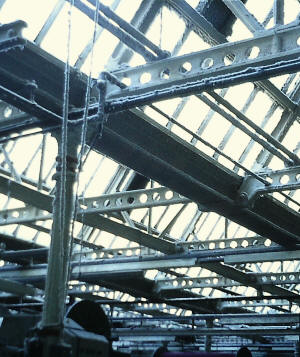
|
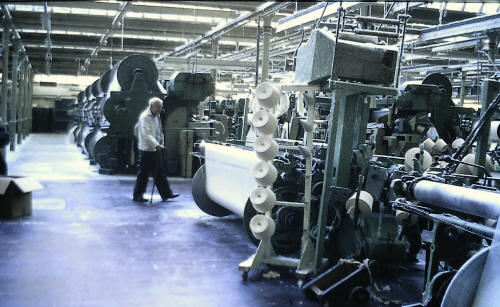 |
|
I was always subconsciously aware of the presence of
this industry in local townscape of Oldham,
Rochdale, Heywood, and so on. It was unavoidable.
All the buildings were soot-blackened (right,
upper), and when we blew our noses we expected the
handkerchief to be black. It was many years before I
realised that sheep are naturally white! A lot of
the air pollution was caused by coal fires in the
rows of terraced houses that surrounded the mills.
Things suddenly got better in 1956 when the Clean
Air Act and smoke prevention zones were introduced
to reduce the Manchester smog episodes which I also
vividly remember. The terrace (right, lower) shows a
mixture of blackened and cleaned houses. I always
preferred the look of the black ones!
I didn’t have a camera until I was at least 20 and
didn’t really get interested in the subject until
nostalgia kicked in when I became a ‘southerner’ in
about 1972.
Fortunately, Keith was interested in canals, and of
course the mills – like the one on the previous page
at Middleton Junction built in 1874 on the Rochdale
Canal near where I grew up – sneaked into the
pictures. (So did I!).
|
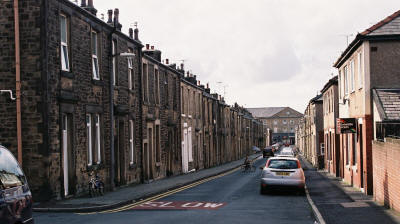 |
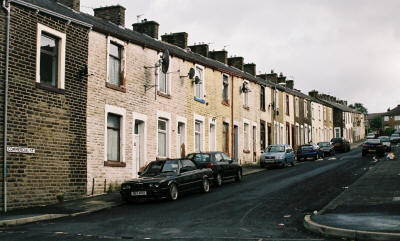 |
|
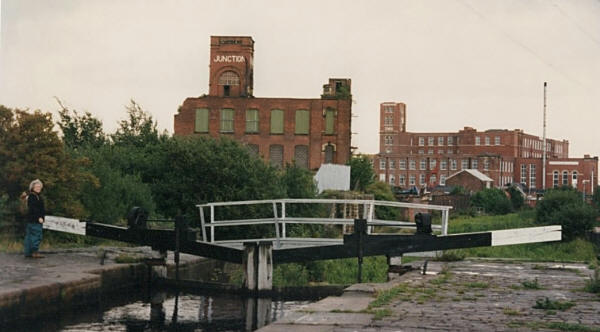
|
|
By this time the era of the mills, cotton in
particular, had ended and the characteristic mill
chimneys were being demolished apace. That’s why I
have never admired Fred Dibnah! He was personally
responsible for felling some of my favourite
landmarks, including the chimney that used to be
alongside Briar Mill (1906) at Shaw, which I
frequently passed on the train. Fans of the
Scott & Bailey
detective series might recognise this mill from the
opening titles. |
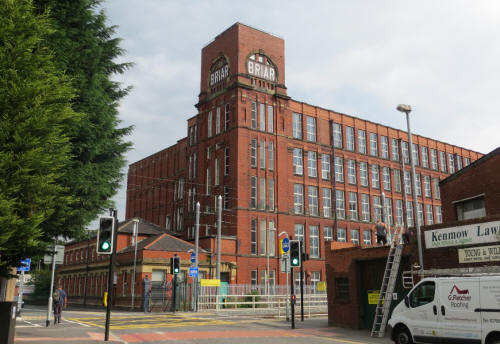 |
|
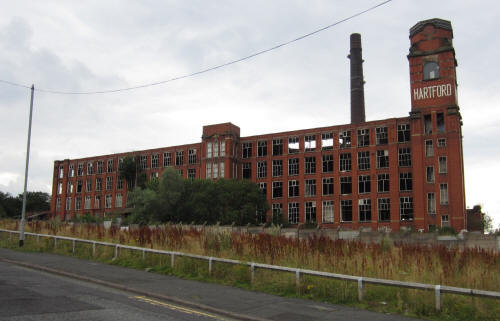
|
On the other hand, Hartford Mill (1907) at
Chadderton, which we also photographed in 2013,
still had its chimney, but unlike Briar above which
has been converted for other uses, it had become
derelict. Now in 2020, despite its grade 2 listed
status, it is being demolished. |
|
|
